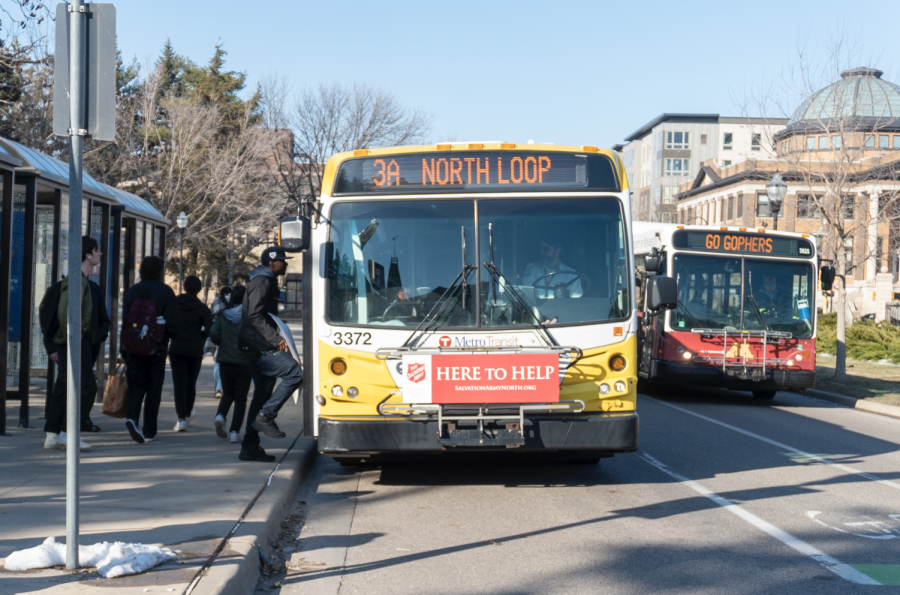With a competitive DFL primary just one week away, the three main candidates must prove how their respective policy proposals will remedy the unprecedented budget crisis facing Minnesota.
Each would rely on varying levels of tax increases, spending reductions and payment deferrals to plug the state’s projected $6 billion deficit.
“The next governor and the next legislature are going to have to make hard decisions that will fundamentally affect state government finances for the next 10, 15, 20 years or more,” state economist Tom Stinson said.
Stinson, also a University of Minnesota professor, declined to comment on the candidates’ specific policy proposals to maintain objectivity.
Former U.S. Sen. Mark Dayton’s revenue proposal, the most radical of the three, would levy about $4 billion in additional taxes. Much of the increases would fall on individuals earning more than $130,000 yearly.
Jay Kiedrowski, a senior fellow at the Humphrey Institute of Public Affairs and a Kelliher supporter, called Dayton’s income tax proposal “detrimental to Minnesota as a whole.”
Furthermore, it would be difficult for such a marked increase to pass the legislature, said Jerry Zhao, an assistant professor at the Institute.
DFL-endorsed Kelliher and former state Rep. Matt Entenza propose increasing taxes on individuals whose yearly earnings exceed $250,000.
Kelliher would rely on slightly higher increases than Entenza to raise a total of $600 million in new income tax revenue.
Dayton countered that the other candidates stand closer to their Republican opponent, Tom Emmer, on the subject of taxes.
The introduction of state-operated casinos to drum up between $250 to $360 million in revenue also made it into Dayton’s proposal, a measure that has drawn legislative opposition in the past.
Despite the possibility of incurring consumer wrath, Entenza also proposed a controversial revenue proposal: instituting an online sales tax.
“The reality is, we’ve created a disincentive to shop locally,” he said.
On top of tax increases, each campaign proposes eliminating many of the same tax breaks and loopholes.
Recouping some of the estimated $1 billion lost yearly by the state in underreported taxes is also a goal of all the campaigns.
But revenue is only one part of the equation.
Both Entenza’s and Kelliher’s plans require cuts, savings and deferments — totaling about $3.6 billion for each plan.
Dayton would cut about $680 million, with about $635 million up in the air for his proposal.
Experts agree that delaying payments, like the legislature’s $1.8 billion deferment from schools last session, is typically negative.
“Deferring is really stupid,” David Schultz, a public policy professor at Hamline University, said. “Deferring spending the way they’ve been doing it for the last eight years is like paying off one credit card balance with another credit card. At some point you eventually have to pay off the balance or just concede the fact that you’re never going to address it.”
Because of the current crisis, both Kelliher and Entenza called the shifts necessary to bridge the gap until unemployment rates rebound and revenue increases.
The main focus of her campaign is jobs, Kelliher said.
More than the other candidates, Entenza has focused his job-creation proposal on renewable energy.
Nearly all of Minnesota’s $10 billion in energy costs leave the state, Entenza said. He said he would use wind, geothermal and solar energy sources to keep that money in Minnesota.
“It’s a broad theme, in terms of saying green jobs,” Schultz said. “It’s kind of like you’re saying you’re in favor of motherhood and apple pie. No one’s opposed to it, the question becomes: What does it really mean?”
Entenza also highlighted education and infrastructure spending in his proposal.
Jumpstarting the state’s economy in the form of aggressive bonding bills is also a staple of the campaigns in order to create jobs.
Kelliher’s plan is the most ambitious. She’s proposed a $1 billion bill for each of the first two years she would be in office.
The plan would create 50,000 jobs and improve the state’s crumbling infrastructure, Kelliher said.
Under her proposal, the University would receive bonding allocations similar to years past.
Entenza and Dayton also proposed an initial $1 billion bonding bill, but declined to make predictions about future funding. Dayton seemed more amenable to a second bill.
Neither Dayton nor Entenza had a specific allocation for the University.
Like bonding, the candidates’ higher education plans have so far included few concrete details.
As Democrats, each of them would generally support higher education spending to hold down tuition, Steve Kelley, former chairman of the Senate Education Committee and senior fellow at the Humphrey Institute, said.
Kelliher said it’s her goal to increase state tuition subsidies from one-third to one-half the total cost.
Two-year institutions would also be a priority, she said.
But Dayton called the other candidate’s plans unrealistic.
“Anybody who says they’re going to cut three or four or six billion dollars out of the state budget and not affect education is just not being serious,” he said, noting that education spending makes up more than half the state’s budget.
In terms of the University’s research mission, Entenza said he would press for advances in green products like grass-based ethanol.
Medical technologies would be the focus of their initiatives, Kelliher and Dayton said.
With the disagreements and delays caused by the Central Corridor light-rail line’s route through the middle of the University campus, Kelliher said she would take a more active role in similar, transportation-related situations.
Dayton said his transportation proposals would focus on lessening congestion in the Twin Cities and strengthening highway infrastructure throughout the state. He proposes using federal bonds to jumpstart the number of state transportation projects.
Kelliher and Entenza stressed the necessity of light- and passenger-rail networks, highlighting popular lines like the Minneapolis-to-Chicago line.
Rep. Alice Hausman, DFL-St. Paul, a member of a number of transportation-related committees, worked with Entenza in the past. Hausman designed a 20-year rail plan that Entenza, if elected as governor, would use as a “rough draft.”
Under her plan, Kelliher said the majority of public transit would take the form of busses, but also proposed rail lines from Minneapolis to Duluth and the Twin Cities to Rochester.
















